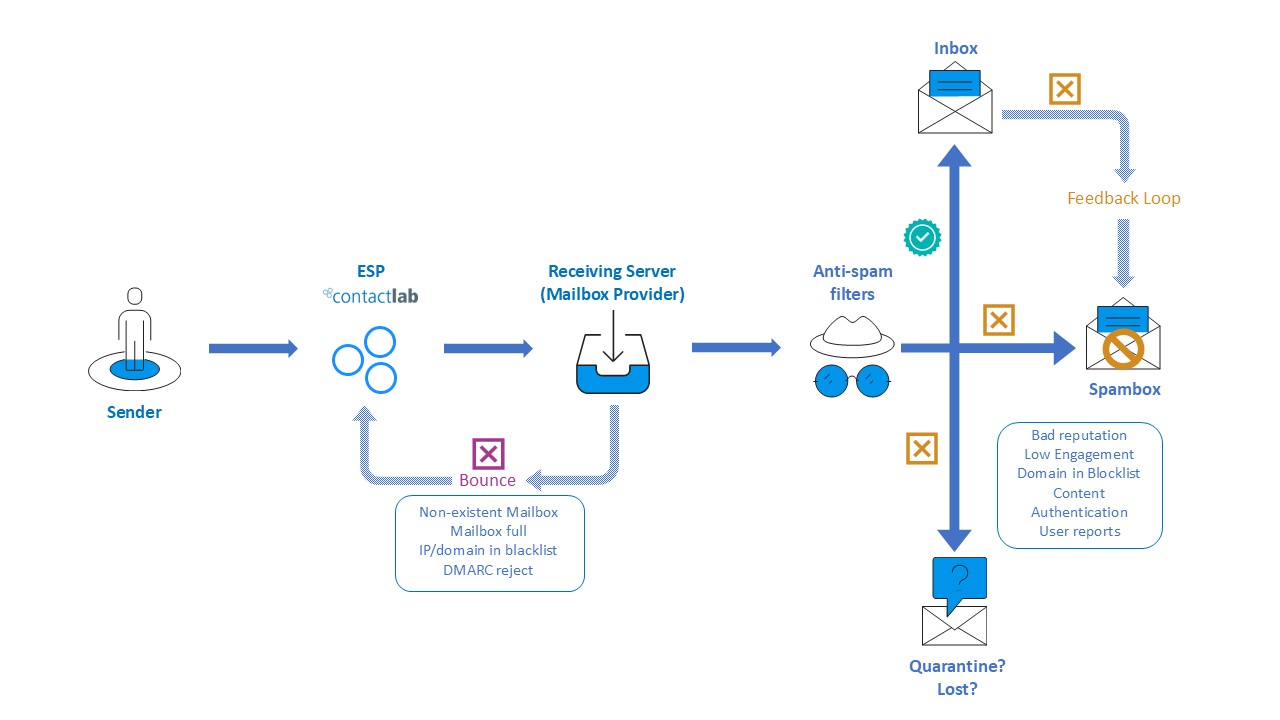The journey of an email
From the moment the email "leaves" Contactlab’s servers, it embarks on a complex journey involving a series of intermediate obstacles.
First obstacle
Once the "send" button is pressed, it is not guaranteed that there will be a recipient server ready to accept the email.
There are several risks that may occur during this step of the journey:
- The recipient's domain may no longer exist.
- The domain never existed.
- The domain exists but refuses to accept emails from that sender or with that type of content.
- The domain exists but was created with the intention of intercepting and penalizing anyone attempting to send to that address (so-called spam traps).
- The domain exists, but the mailbox is temporarily unable to receive emails, for example because it is full.
These errors encountered when the email attempts to reach the recipient's server are called bounces, literally the "bounces" of the email as it returns to the sender.
An email is considered "delivered" by the platform when no bounce is recorded, but this does not mean it has actually reached the inbox. It could end up in spam, quarantine, or be completely blocked by the mailbox provider.
Once an email is accepted by the recipient's mail server, it is impossible to know its final destination.
Second obstacle
Now that it has arrived at the destination server, the email must pass the server’s anti-spam checks. After receiving the email, the server verifies:
- That the sender is truly who they claim to be and that the message is sent from servers authorized to send emails on behalf of that sender, through checks on authentication mechanisms (this is why it’s important to apply authentication standards).
- That all domains involved in the authentication mechanisms have an excellent reputation.
- That the sender’s domain and all domains used in the email links are not present in any blocklist.
- That the content of the message is not considered spam.
- That the recipient wants to receive communications from that sender.
If all these checks pass, the message is delivered to the recipient's inbox.
Third obstacle
Once the email has been delivered, it is not guaranteed that all subsequent emails will be. In fact, the recipient may report to their provider that the received message is irrelevant or unwanted.
This reporting system is known as the Feedback Loop.
If the Feedback Loop reports increase, receiving providers may decide to stop delivering emails from that sender to their users.
As if that weren’t enough, major mailbox providers have developed proprietary algorithms over the years to determine whether a message should be delivered or not.
